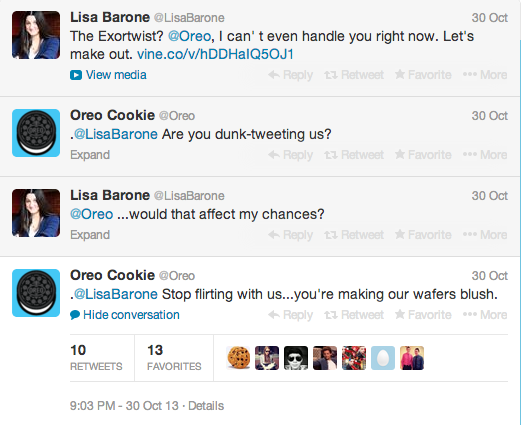Everything you put on social media is part of a brand.
Whether it is your business’s profile or it’s your own personal account, everything that is tweeted, posted, commented and favourited is a contribution to the overall development of a brand identity. Who and what you choose to engage with constitutes your social network – the schoolyard playground, so to speak, within which your brand develops and is actualized.
I have had plenty of experience in developing and maintaining various networks across several different brands – both personal and professional.
I’ve had the exciting opportunity to become quite invested in digital content in the sport industry, specifically in tennis, as a result of the networking I did on Twitter – all while using a completely different account from my personal one. I created a “tennis account” where I could follow and engage with tennis journalists, high-profile bloggers, players, and other key stakeholders in the industry. This engagement landed me a volunteer position at Rogers Cup in Montreal, which in turn landed me an internship at Tennis Canada in Toronto, which in turn has allowed me to explore various freelance opportunities within digital media across multiple sports.
On my personal accounts, I take a different approach. The network I’ve developed for myself on Facebook and Instagram, for example, constitutes largely friendships I’ve developed in person prior to engaging with them on social media. My brand of humour is at its best on Facebook, Instagram, and my other Twitter account – and I use that for my personal networking (and who knows, sometimes personal networking can become professional!)
Professional networking is best done in person – there’s no doubt about that. With the amount of options and images and words and people and profiles and everything on the internet, networking “irl” is the job interview you wouldn’t have got online – but that’s not to say there’s not something to be gained professionally in the digital space. In fact, there’s plenty to be gained.
LinkedIn is the number one social networking service for professionals. While I would hesitate to look up a prospective employer or employee (from a recruiter’s perspective) on their Facebook (which should be private and inaccessible anyway), I wouldn’t hesitate to research them on LinkedIn. The networking services that LinkedIn provides are paramount, giving you suggested connections on both real-life connections as well as connections that are aligned with your professional experiences and skills.
My personal commitment to the next several months of networking is to engage more with these platforms at a more frequent rate. It’s easy to let go of your digital presence when real life takes the wheel – and that can’t always be helped. But when it can, maintenance of your social networks is paramount. While I haven’t always been consistent in my posting across all my channels, particularly on LinkedIn, the more engaged I have been the more results I’ve seen in terms of growing my networks and getting myself out there – everywhere.



.jpg)